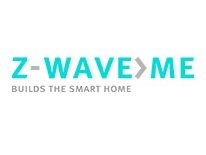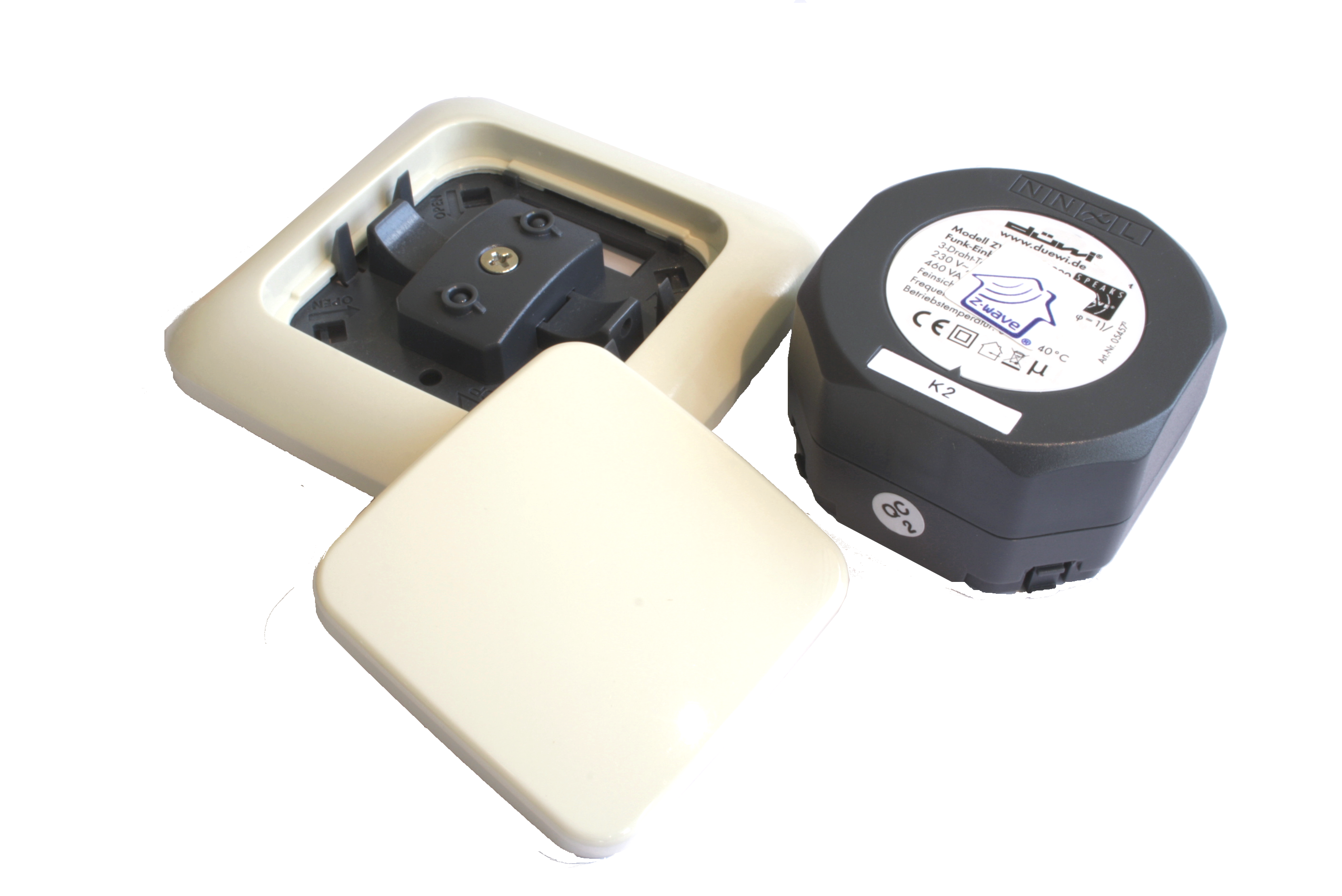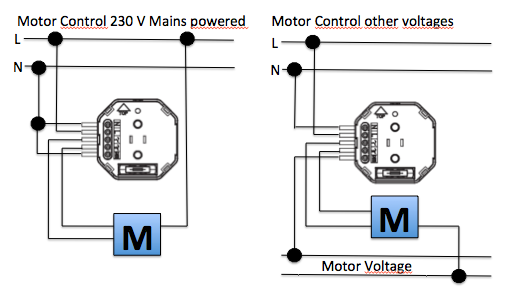
Z-Wave.Me
Wall Blind Control Set for Busch-Jaeger DURO 2000
SKU: ZME_05459

Quickstart
This is a
Triple click one of the buttons on the device will include the device. A green blinking of LED will indicate successful inclusion. The device is excluded by triple click to one of the buttons.
Important safety information
Please read this manual carefully. Failure to follow the recommendations in this manual may be dangerous or may violate the law. The manufacturer, importer, distributor and seller shall not be liable for any loss or damage resulting from failure to comply with the instructions in this manual or any other material. Use this equipment only for its intended purpose. Follow the disposal instructions. Do not dispose of electronic equipment or batteries in a fire or near open heat sources.What is Z-Wave?
Z-Wave is the international wireless protocol for communication in the Smart Home. This device is suited for use in the region mentioned in the Quickstart section.
Z-Wave ensures a reliable communication by reconfirming every message (two-way communication) and every mains powered node can act as a repeater for other nodes (meshed network) in case the receiver is not in direct wireless range of the transmitter.
This device and every other certified Z-Wave device can be used together with any other certified Z-Wave device regardless of brand and origin as long as both are suited for the same frequency range.
If a device supports secure communication it will communicate with other devices secure as long as this device provides the same or a higher level of security. Otherwise it will automatically turn into a lower level of security to maintain backward compatibility.
For more information about Z-Wave technology, devices, white papers etc. please refer to www.z-wave.info.
Product Description
The Z-Wave.Me Flush Mountable Motor Control is a wireless actuator able to control 230 V powered motors for blinds and jalousies. The device is delivered as a complete set with flush mountable insert, paddle and mounting frame compatible to the design of the switching series DURO 2000 SI in color pearl white from Busch Jaeger. The paddle of the device is used to control the device itself but can also be configured to activate scenes in a central IP gateway or controller. The status of the motor control is indicated on a dual color LED for test purposes and every status change is - if configured - reported to a central IP gateway or controller. The function of the local paddle can be configured as detached from the local operation. In this local control different devices are controlled by Z-Wave while the local actuator is controlled by other devices using Z-Wave. This device is designed for a 3 wire system and needs a neutral wire in the wall box.
Prepare for Installation / Reset
Please read the user manual before installing the product.
In order to include (add) a Z-Wave device to a network it must be in factory default state. Please make sure to reset the device into factory default. You can do this by performing an Exclusion operation as described below in the manual. Every Z-Wave controller is able to perform this operation however it is recommended to use the primary controller of the previous network to make sure the very device is excluded properly from this network.
Safety Warning for Mains Powered Devices
ATTENTION: only authorized technicians under consideration of the country-specific installation guidelines/norms may do works with mains power. Prior to the assembly of the product, the voltage network has to be switched off and ensured against re-switching.
Installation
The insert is designed to fit into standard circular European wall boxes with 60 mm diameter. The insert combined with the mounting plate can be screwed in top of the wall box using the two screws delivered with the device. The mounting frame is then attached to the mounting plate and the switch is completed by pushing the switching paddle into the mounting frame. Mind the arrow on the inserts top side showing the mounting direction of the insert. It is also possible to mount the insert without any local operation behind a cover or inside a lamp. The mounting plate, frame and the switching paddle become useless in such a scenario.

The schematics below shows how to wire the actuator. The hot wired from the mains distribution panel is connected to the inserts contacts L. The contact S is the switched contact and need to be connected to the cable to the load. The cable from the load is connected to neutral N. If there are both neutral and hot wire in the wall box the neutral from the mains panel and the neutral to the lamp need to be connected. It is not harmful if the two connections L and S are mismatched on the actuator.
A fuse protects the electronics of the actuator. The fuse is accessible on the top side of the device. Inside the plug there is the working fuse plus a spare fuse.

CALIBRATION:
The device is able to position a blind on a desired percentage position (50 percent open) when controlled wirelessly. To allow this kind of positioning the total travel times of the motor in opening and closing direction must be determined using a simple clock. The two values need to be configured as configuration parameter 4 and 5. Be aware that the percentage settings will never be very accurate because the blind control actuator lacks a sensor to determine the correct position.
Inclusion/Exclusion
On factory default the device does not belong to any Z-Wave network. The device needs to be added to an existing wireless network to communicate with the devices of this network. This process is called Inclusion.
Devices can also be removed from a network. This process is called Exclusion. Both processes are initiated by the primary controller of the Z-Wave network. This controller is turned into exclusion respective inclusion mode. Inclusion and Exclusion is then performed doing a special manual action right on the device.
Inclusion
Blinking red/green LED indicates that the device is in factory reset state. Once the controller is turned into inclusion mode triple click one of the buttons on the device will include the device. A green blinking of LED will indicate successful inclusion that will be turned off shortly afterwards. The device is excluded by triple click to one of the buttons when the controller is in exclusion mode.
Exclusion
Blinking red/green LED indicates that the device is in factory reset state. Once the controller is turned into inclusion mode triple click one of the buttons on the device will include the device. A green blinking of LED will indicate successful inclusion that will be turned off shortly afterwards. The device is excluded by triple click to one of the buttons when the controller is in exclusion mode.
Product Usage
The actuator is operated by the local switching paddles or wirelessly using Z-Wave commands (communication patterns 1, 4, 5 and 7). If the insert is mounted correctly pushing the upper part of the paddle will turn the blind into the open position; pushing the lower part of the paddle will turn the blind into the close position. Hitting the paddle during operation (moving motor) will stop the operation for safety reasons. Keeping the paddle pushed moved the motor until the desired position is reached. Releasing the paddle will stop the motor.
The device is also able to report status changes to a controller (communication pattern 2) and to remotely operate other devices (communication pattern 5) by sending wireless Z-Wave commands. In case the remote device is a switch as well the remote operation is similar to the local operation by pushing upper to lower part of the switching paddle. However the device can also be configured with configuration parameter 13 and 14 to operate remote dimmers. To dim a remote device the paddle needs to be pushed and hold (upper part to dim up, lower part to dim down). Its furthermore possible to assign remote operation functions to the double click of the paddles.
Quick trouble shooting
Here are a few hints for network installation if things dont work as expected.
- Make sure a device is in factory reset state before including. In doubt exclude before include.
- If inclusion still fails, check if both devices use the same frequency.
- Remove all dead devices from associations. Otherwise you will see severe delays.
- Never use sleeping battery devices without a central controller.
- Dont poll FLIRS devices.
- Make sure to have enough mains powered device to benefit from the meshing
Configuration Parameters
Z-Wave products are supposed to work out of the box after inclusion, however certain configuration can adapt the function better to user needs or unlock further enhanced features.
IMPORTANT: Controllers may only allow configuring signed values. In order to set values in the range 128 ... 255 the value sent in the application shall be the desired value minus 256. For example: To set a parameter to 200 it may be needed to set a value of 200 minus 256 = minus 56. In case of a two byte value the same logic applies: Values greater than 32768 may needed to be given as negative values too.
Technical Data
| Dimensions | 0.0520000x0.0520000x0.0300000 mm |
| Weight | 60 gr |
| EAN | 0019962003608 |
| Specific Device Class | Motor Control |
| Certification ID | ZC08-11110010 |
| Frequency | Europe - 868,4 Mhz |
| Maximum transmission power | 5 mW |
Explanation of Z-Wave specific terms
- Controller — is a Z-Wave device with capabilities to manage the network. Controllers are typically Gateways,Remote Controls or battery operated wall controllers.
- Slave — is a Z-Wave device without capabilities to manage the network. Slaves can be sensors, actuators and even remote controls.
- Primary Controller — is the central organizer of the network. It must be a controller. There can be only one primary controller in a Z-Wave network.
- Inclusion — is the process of adding new Z-Wave devices into a network.
- Exclusion — is the process of removing Z-Wave devices from the network.
- Association — is a control relationship between a controlling device and a controlled device.
- Wakeup Notification — is a special wireless message issued by a Z-Wave device to announces that is able to communicate.
- Node Information Frame — is a special wireless message issued by a Z-Wave device to announce its capabilities and functions.